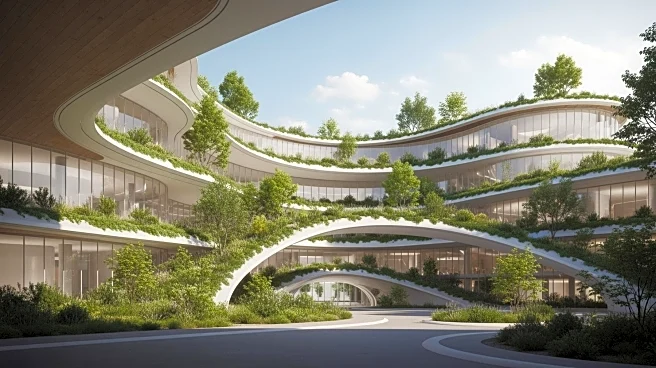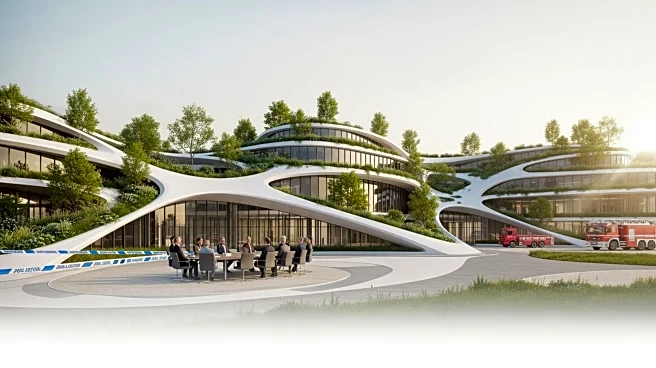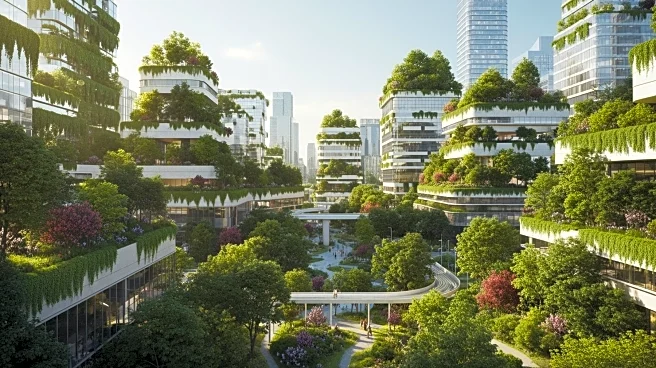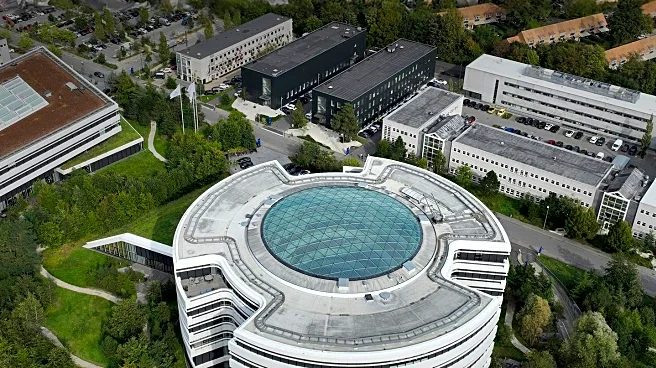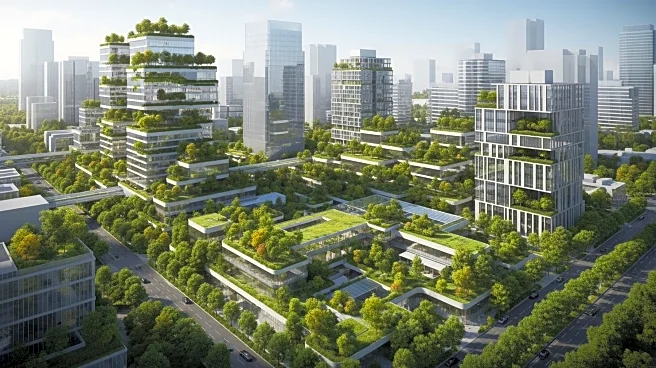What's Happening?
Biomimicry in architecture is gaining traction as architects and designers increasingly draw inspiration from nature to create sustainable and efficient buildings. This approach involves mimicking natural
forms, processes, and ecosystems to develop structures that are both aesthetically pleasing and functionally intelligent. Examples include Singapore's Esplanade Theatre, which uses a durian-inspired façade for natural shading, and Beijing's Watercube, where bubble-like cladding passively heats and lights interior pools. The Gherkin in London optimizes airflow and structural strength by emulating the lattice structure of the Venus Flower Basket Sponge. These designs demonstrate how biomimicry can harmonize buildings with their environment, optimize resources, and advance sustainability.
Why It's Important?
The adoption of biomimicry in architecture represents a significant shift towards more sustainable and environmentally friendly building practices. By learning from nature, architects can create structures that reduce energy consumption, minimize environmental impact, and enhance the quality of life for occupants. This approach not only addresses the growing demand for green buildings but also contributes to the broader goal of combating climate change. As urban areas continue to expand, biomimicry offers a viable solution for creating resilient and adaptable infrastructures that can withstand environmental challenges. Stakeholders in the construction and real estate industries stand to benefit from reduced operational costs and increased market appeal for eco-friendly developments.
What's Next?
As biomimicry gains popularity, it is likely to influence future architectural designs and urban planning strategies. Architects and developers may increasingly incorporate nature-inspired elements into new projects, leading to a rise in sustainable building certifications and incentives. Governments and regulatory bodies might also support biomimicry through policies that encourage green construction practices. Additionally, educational institutions could expand their curricula to include biomimicry principles, preparing the next generation of architects to embrace this innovative approach. Collaboration between architects, scientists, and environmentalists will be crucial in advancing biomimicry and ensuring its integration into mainstream architecture.
Beyond the Headlines
Biomimicry in architecture not only offers practical benefits but also raises ethical and cultural considerations. By imitating nature, architects are challenged to respect and preserve the ecosystems they draw inspiration from. This approach encourages a deeper understanding of the interconnectedness between human-made environments and the natural world. It also prompts discussions on the role of technology in enhancing or disrupting natural processes. As biomimicry becomes more prevalent, it may inspire a cultural shift towards valuing and protecting biodiversity, influencing societal attitudes towards conservation and sustainability.
